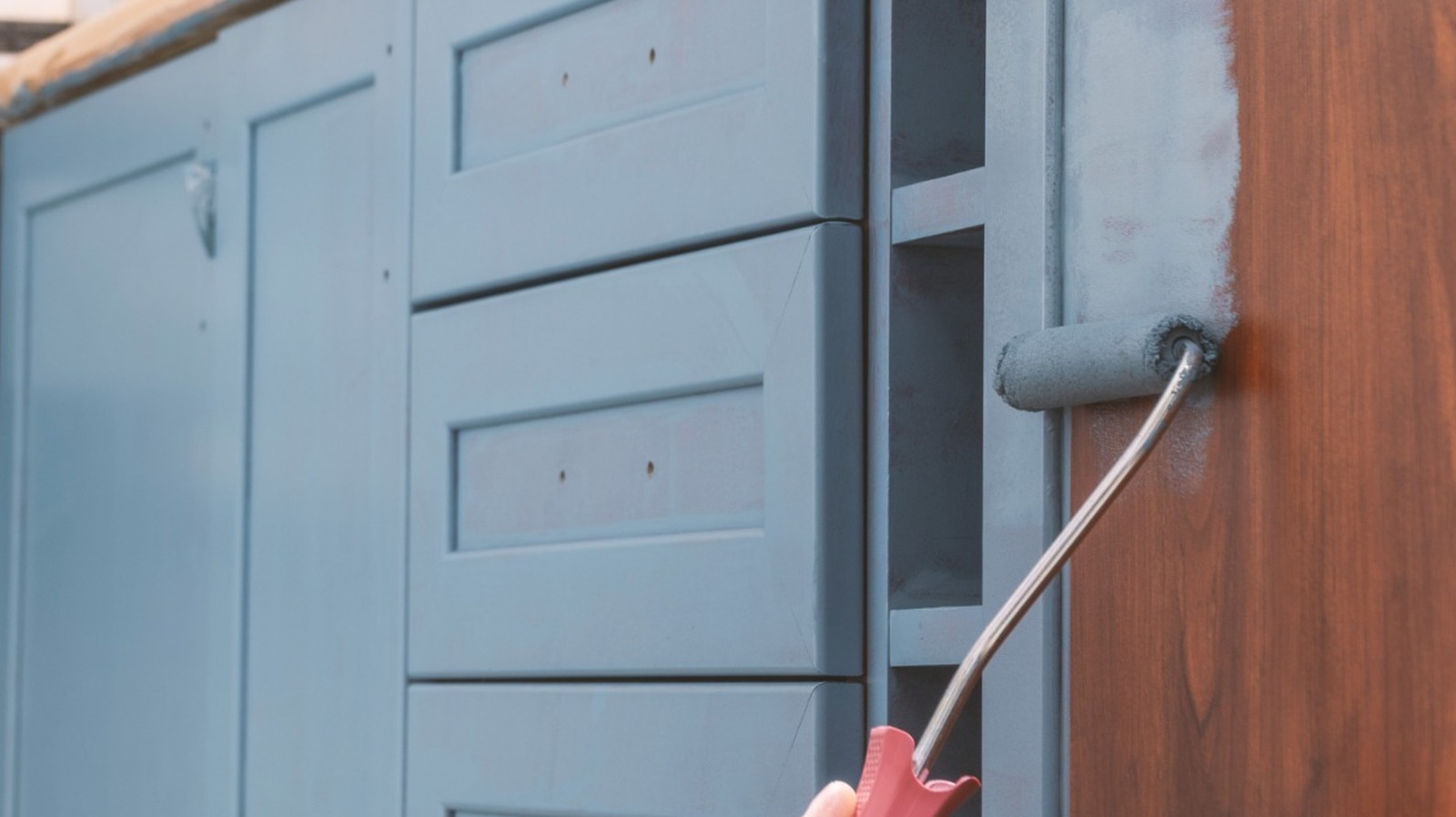
"After removing your old cabinets, a product like Citristrip can strip off the old paint or varnish. This stuff can strip multiple layers and is biodegradable. It also does not produce the harsh fumes of other chemical stripping agents, making it a solid choice. Apply it according to the directions and then wrap your cabinets in plastic wrap to seal the paint thinner and let it really soak in."
"Unwrap your cabinets after they have sat overnight. Use a scraper to remove those layers of paint or varnish and reach the bare wood. Once you've scraped as much as you can, switch to 60-grit sandpaper to remove the last remnants in cracks or crevices that the scraper couldn't reach. Then use a sander with 220-grit sandpaper to finish sanding and smooth the cabinet in preparation for new paint or stain."
"Cabinets are often the most expensive part of a kitchen remodel, so updating what you have is a cost-effective way to get a whole new look. Make sure you keep your workspace organized when you are stripping and cleaning your cabinets. For instance, you should label all of your hardware. Knobs, handles, hinges, and more will fit best in the original cabinets they came from. Give everything a numbered label so you can match each piece up again when you are done."
Remove cabinets and strip paint or varnish to bare wood using a biodegradable stripper like Citristrip, which works on multiple layers and emits fewer harsh fumes. Apply according to directions, wrap cabinets in plastic to seal in the stripper, and let them sit overnight. Unwrap and scrape off dissolved finish, then use 60-grit sandpaper to remove residue in cracks and crevices. Finish with a sander and 220-grit sandpaper to smooth surfaces for paint or stain. Keep the workspace organized, label all hardware and cabinet doors with numbers, and match each piece to its original location for easier reassembly.
Read at Tasting Table
Unable to calculate read time
Collection
[
|
...
]